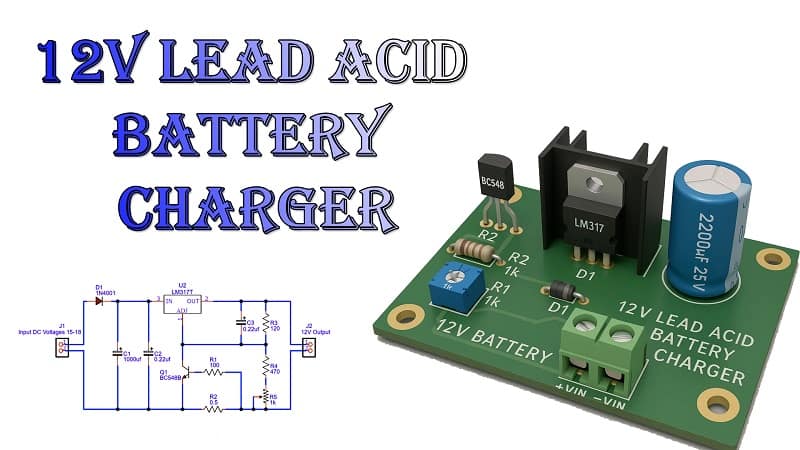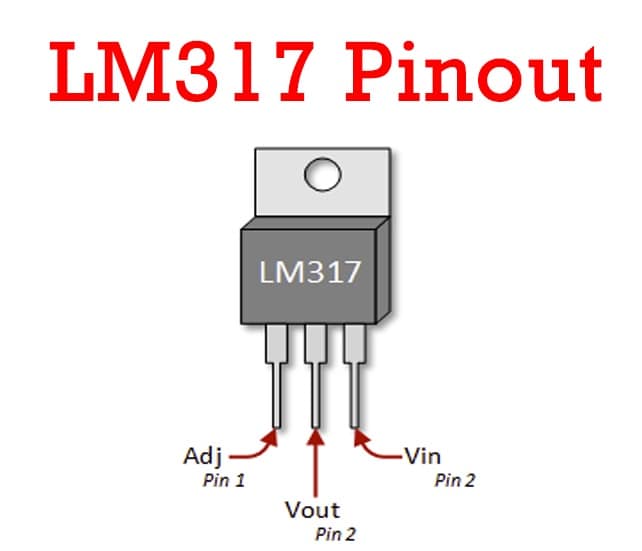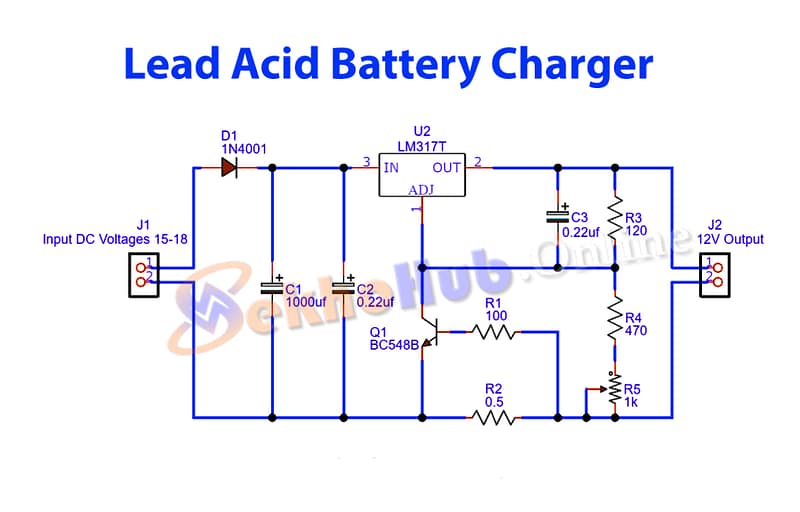Introduction.
In this tutorial, I will tell you the best way to build a basic lead-acid battery charger circuit. This circuit is utilized to charge rechargeable 12V lead-acid batteries with a rating in the scope of 1 Ah to 7 Ah. Lead-acid batteries are one of the most established rechargeable batteries accessible today. Because of their cheap cost compared with new battery technologies and the capacity to give high current flows (a significant factor in cars), lead-acid batteries are as yet the favored selection of batteries in practically all vehicles.
Various batteries have various procedures for charging. And right now, I will tell you the best way to energize a lead-acid battery by utilizing a basic lead-acid battery charger circuit.
Materials for the Project
- 1X LM317T IC
- 1X Battery 12V
- 1X BC548 Transistor
- 1X Pot 1K
- 1X Resistor 0.5Ω, 100Ω, 120Ω, 470Ω
- 2+1X Electrolyte Capacitor 0.22 µF, 1000 µF
LM317 Pinout.
Pin Descriptions:
| Pin No. | Name | Description |
|---|---|---|
| 1 | Adjust (ADJ) | Used to adjust the output voltage. Connects to a voltage divider. |
| 2 | Output (OUT) | Regulated output voltage. |
| 3 | Input (IN) | Unregulated DC input voltage (higher than desired output). |
Quick Voltage Formula:
To set the output voltage:
VOUT=VREF(1+R1R2)+IADJ⋅R2
VREF≈1.25VV_{REF} \approx 1.25V
is usually small and often neglected
Notes:
Use a heat sink for high current.
Always add capacitors:
0.1 µF on input
1 µF or more on output
Download Circuit Diagram
⚙️ Working Explanation
The above circuit diagram is a lead-acid battery charger schematic. The main component of the circuit is the LM317 IC. The circuit gives the desired voltage to charge the 12V fixed lead-acid batteries or 12V SLA batteries. The charging current can be changed with a 1K potentiometer. This fixed lead acid battery charger circuit is programmed so you don’t need to focus on the battery to fully charge; in light of that, the circuit naturally moves its capacity to stream charge when the battery becomes fully charged. Associate the battery that you need to charge in an arrangement of a meter and change the potentiometer to get the ideal charging current. Utilize a heat sink with IC; the input current ought to be at least 15V to get a 12V yield output to charge the battery.
Applications
This DIY 12V lead-acid battery charger can be used in:
✅ Inverter Battery Charging
✅ Motorbike and Car Battery Maintenance
✅ Emergency Light Backup Systems
✅ Small Solar Power Storage Systems
✅ Homemade Projects and Labs for Electronics Education
✅ UPS or Router Backup Projects



